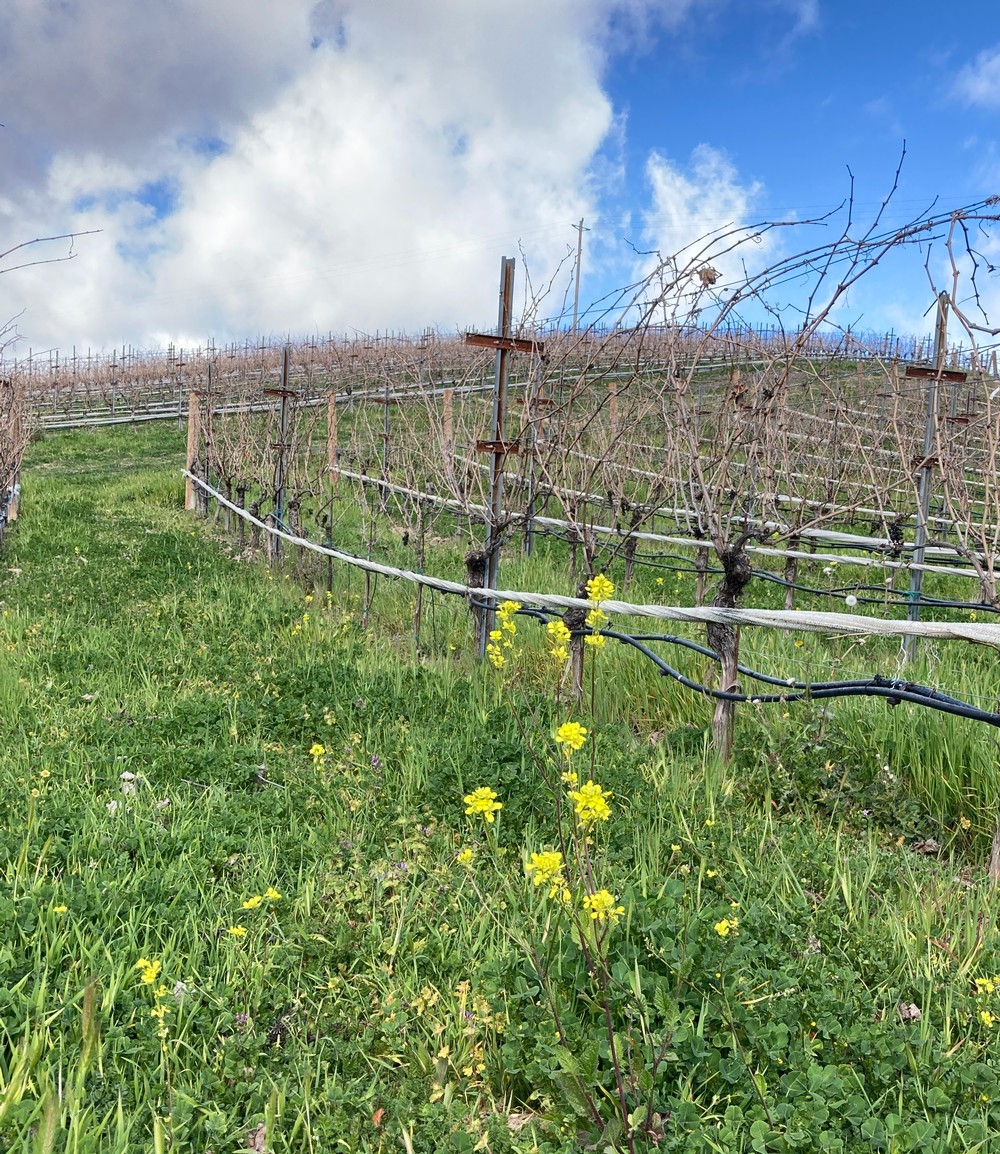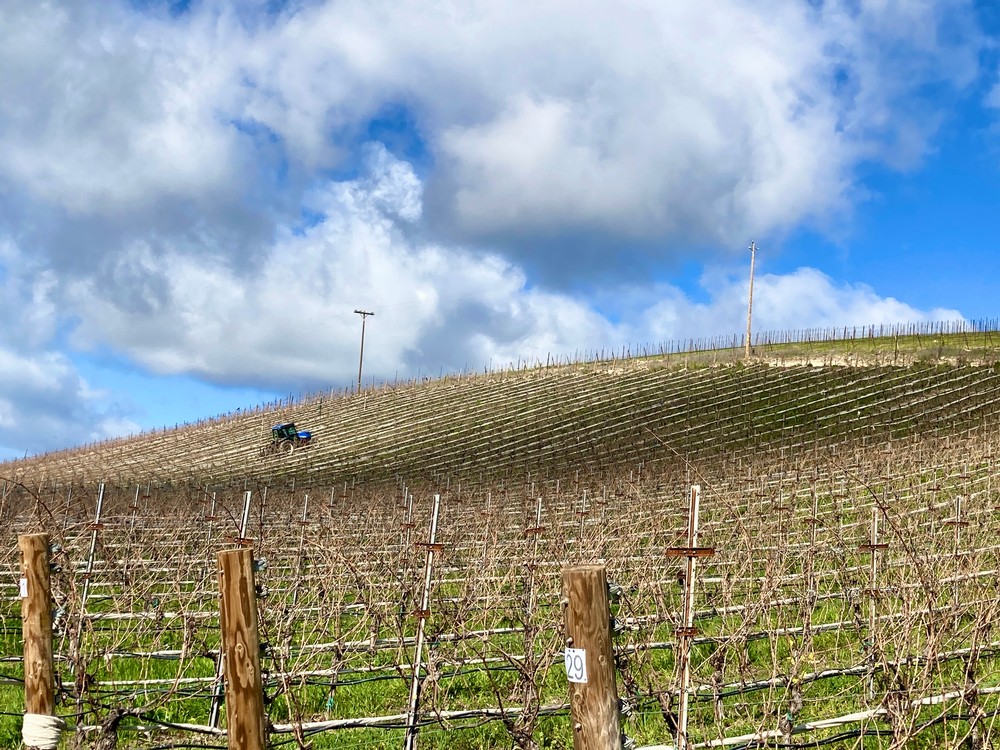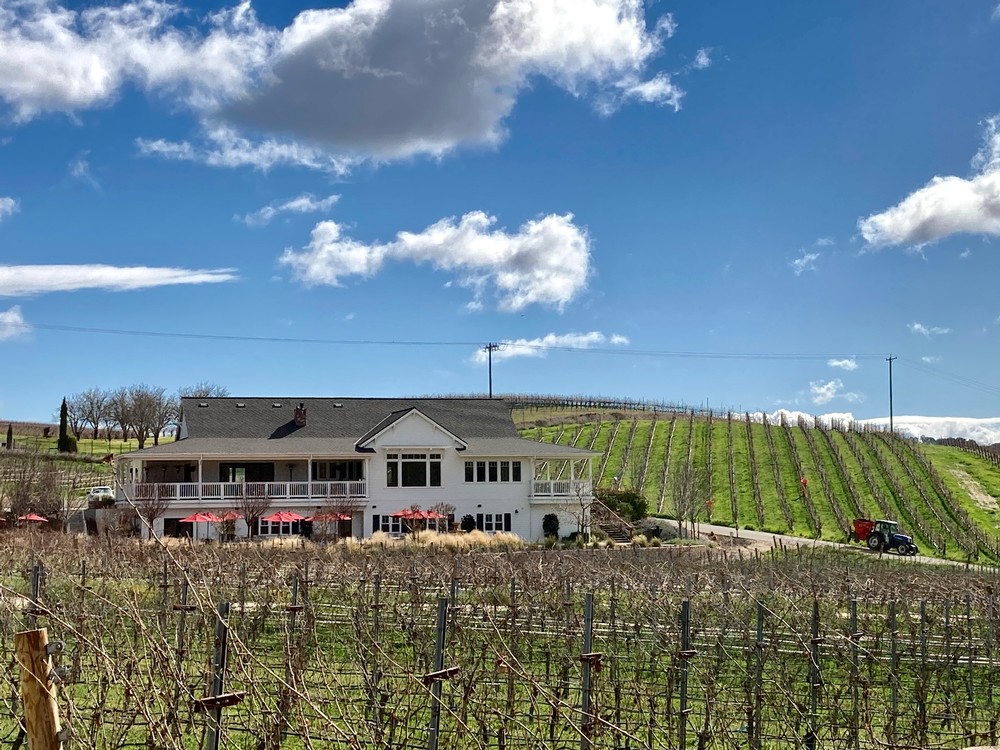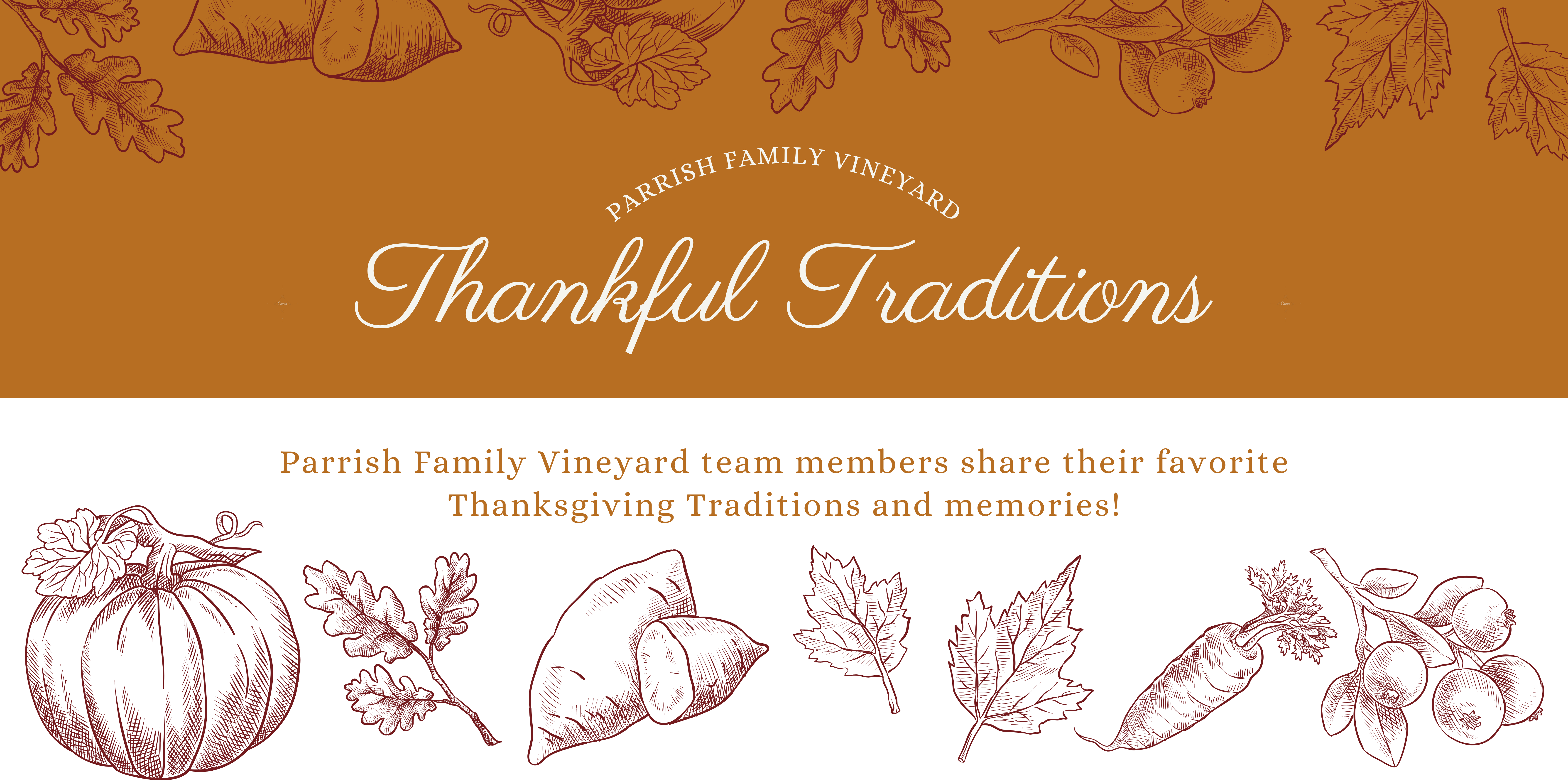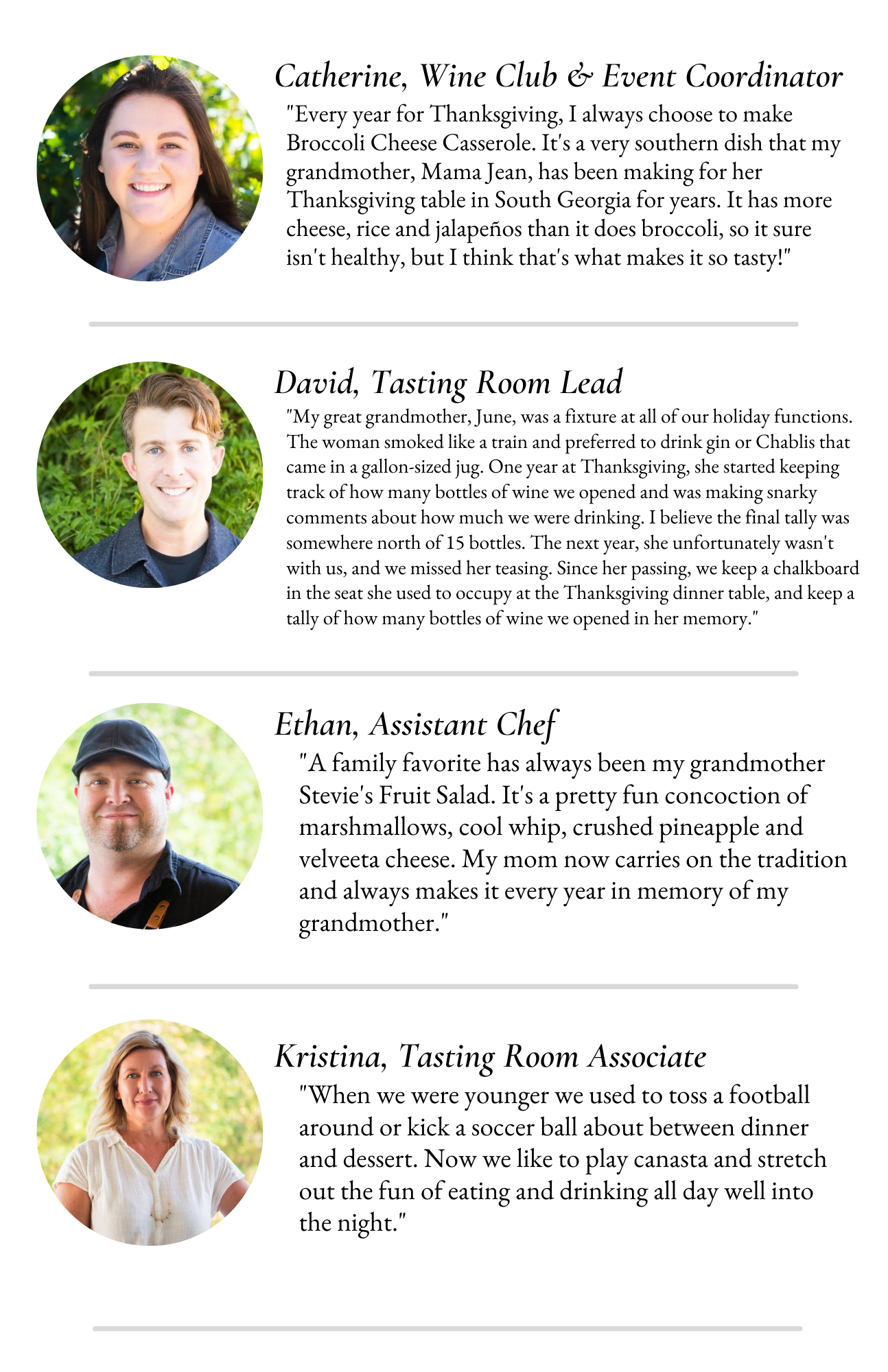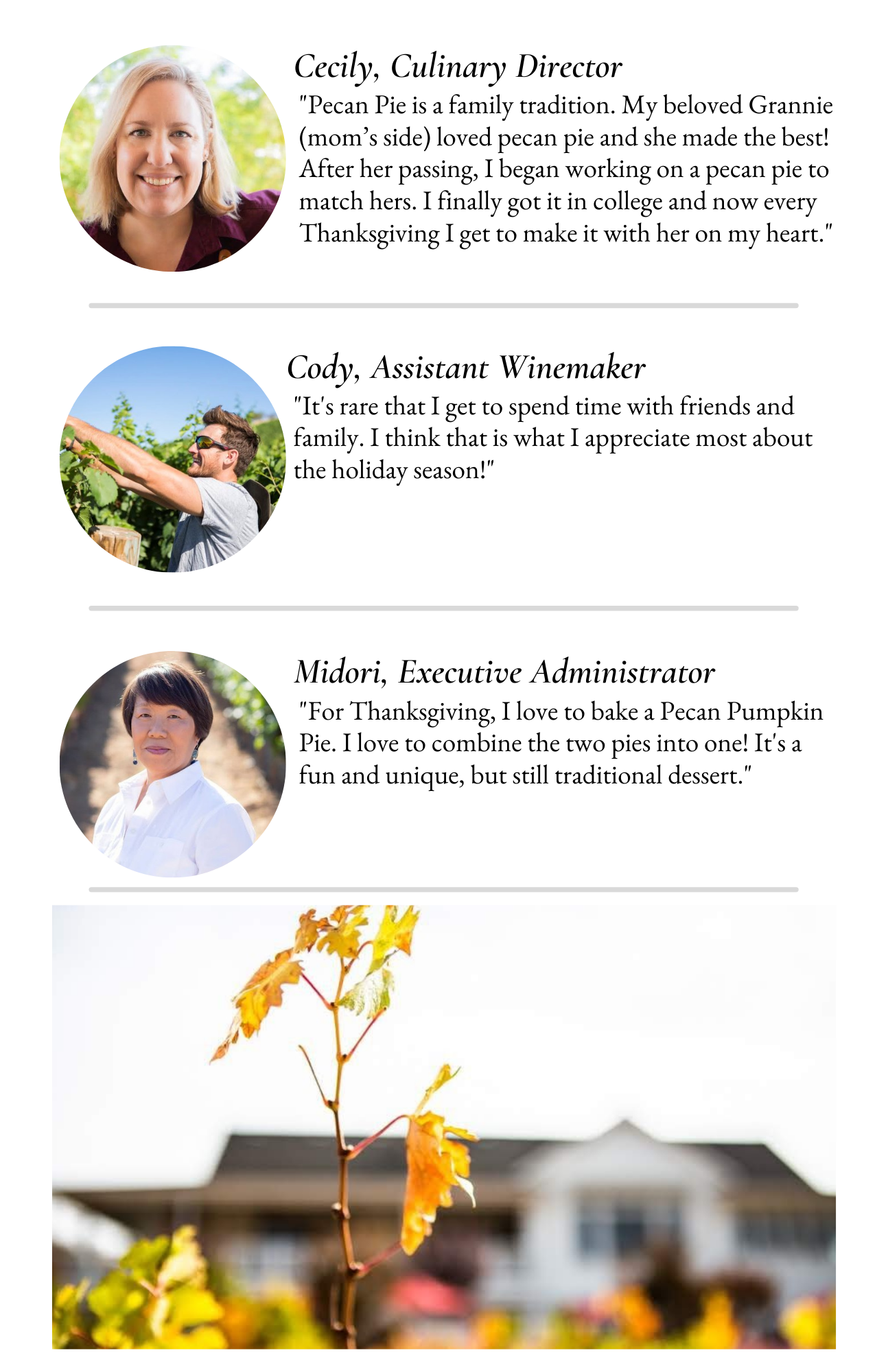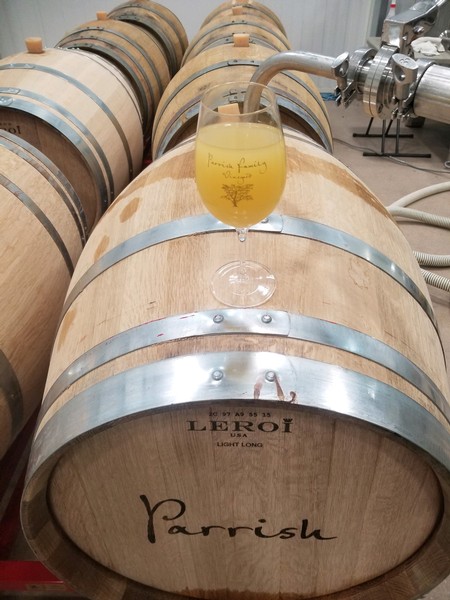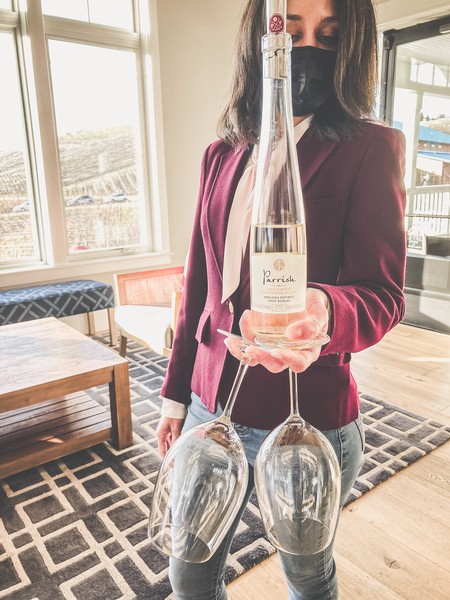Parrish Family Vineyard Blog
Keep up with the Parrish Family Vineyard!
Vines & Wines
Discover more about the Parrish vineyards & winery.
Wine & Food
Wine and food offerings and pairings.
Events
Learn more about upcoming Parrish events & specials!
Visit Paso Robles
Visiting Paso Robles soon? Learn of wineries, food, and lodging for your next trip to Paso Robles' wine country.
Spring 2022 Club - New Wines
David, Cody, and Lupita share about two new wines that were released with the Spring 2022 Club Shipments, the 2019 Chardonnay and the 2018 Estate Cabernet Sauvignon. Play the video to learn more!
Library Dinner
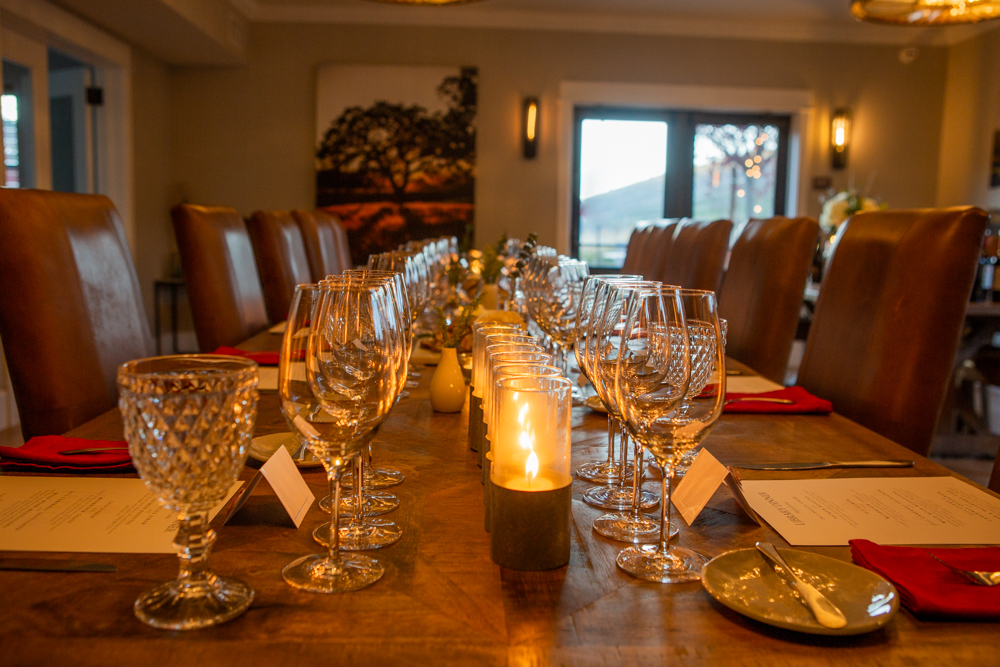
On Saturday, March 5th, we were joined by our high-tier club members for our first Library Dinner featuring library wines by candlelight alongside Winemakers David Parrish and Cody Alt. The wines were paired with a four-course meal lovingly crafted by Assistant Chef, Ethan Ray, and Culinary Director, Cecily Parrish Ray. It was a beautifully intimate occasion giving members access to time with the winemakers and limited wines.
Welcomed with 2021 Rosé
served with fresh whipped butter, housemade walnut sourdough, and homemade cast iron focaccia
2013 Petite Sirah paired with Salmon Rosettes
salmon rosettes with lobster tails and brown butter bread crumbs served with a champagne frisée and basil oil
2013 Silken paired with Mushroom Toast
roasted local oyster mushrooms with brioche toast, pea shoots, garden broccoli blossoms, and a miso duck hollandaise
2013 Cabernet Sauvignon paired with Wild Boar Medallions
wild boar medallions wrapped in beef bacon, israeli couscous with smoked macadamias & black garlic, crispy sunchokes, braised leeks served with a currant silken sauce
2014 Clone 6 Cabernet Sauvignon paired with Pear & Blueberry Tier
angel food cake topped with a pear gelée, blueberry compote, lavender whipped cream, pistachios,
and a late harvest sabayon drizzle
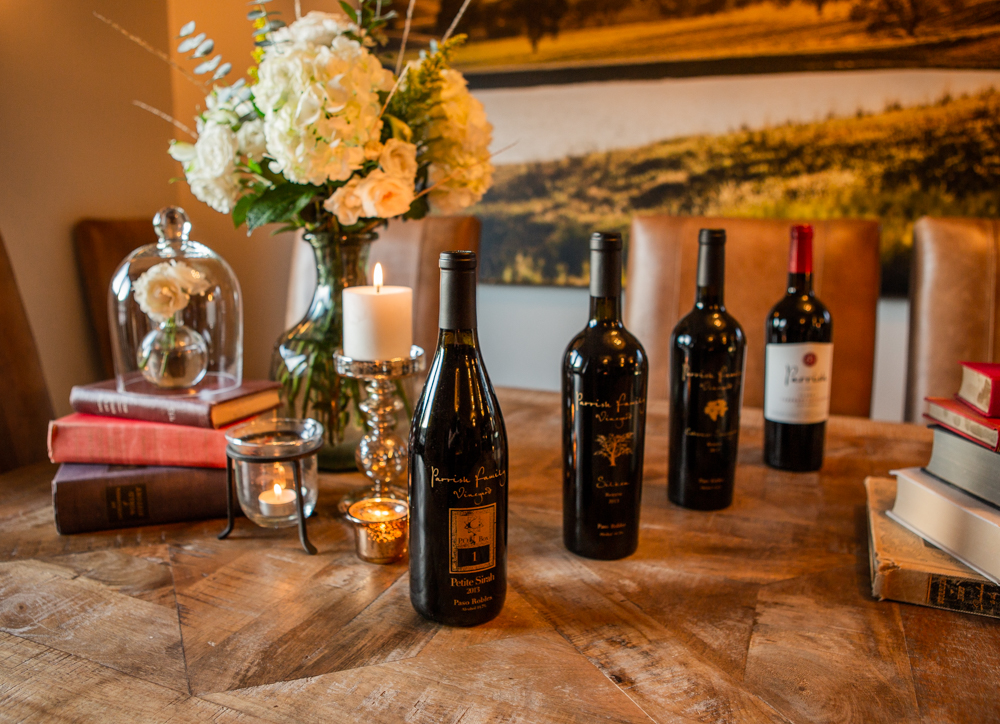
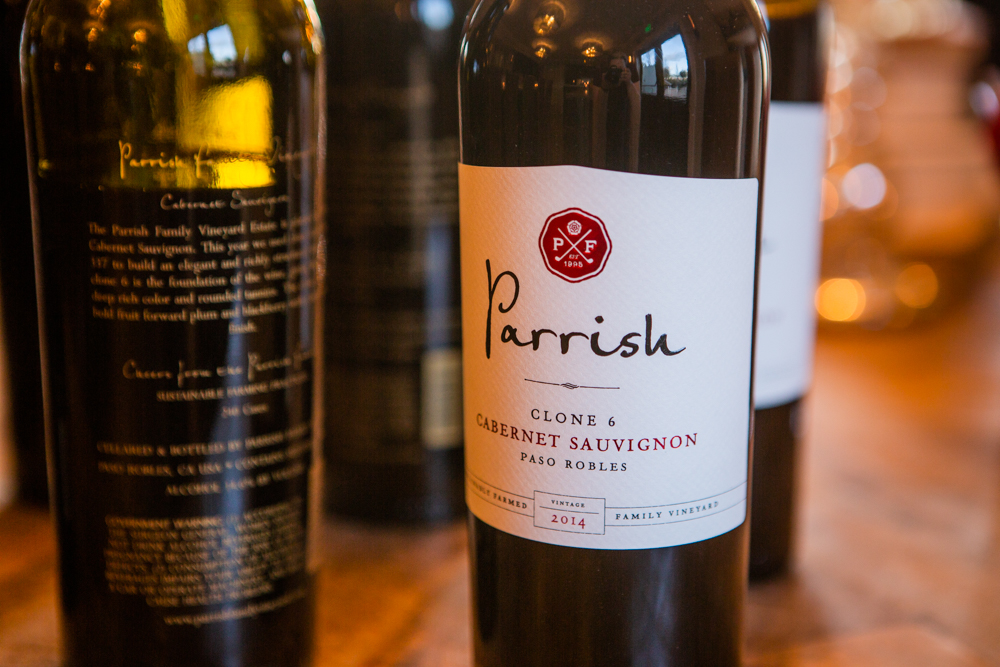
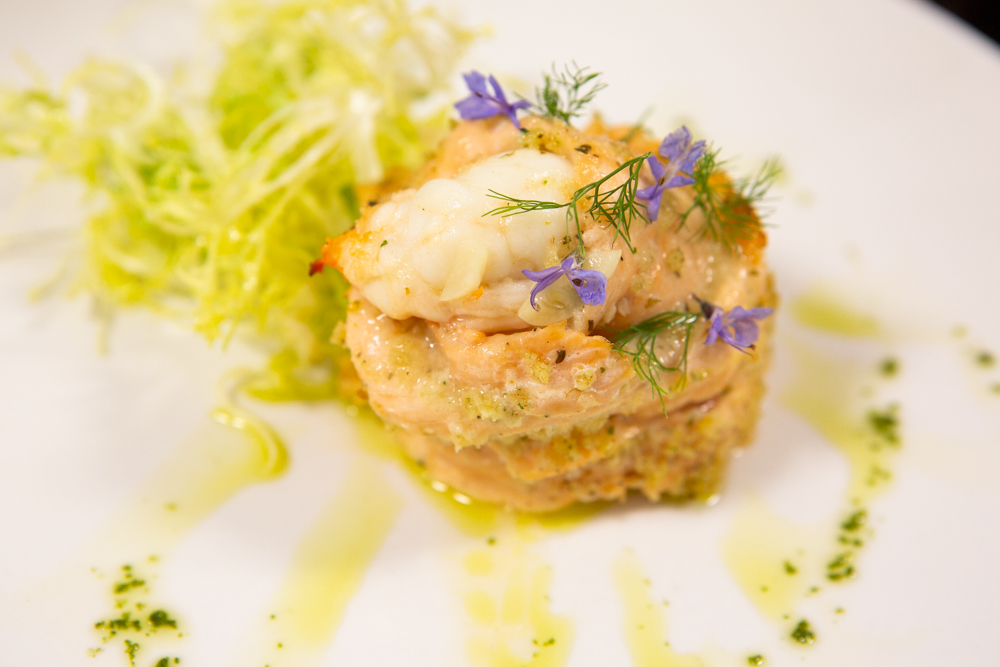
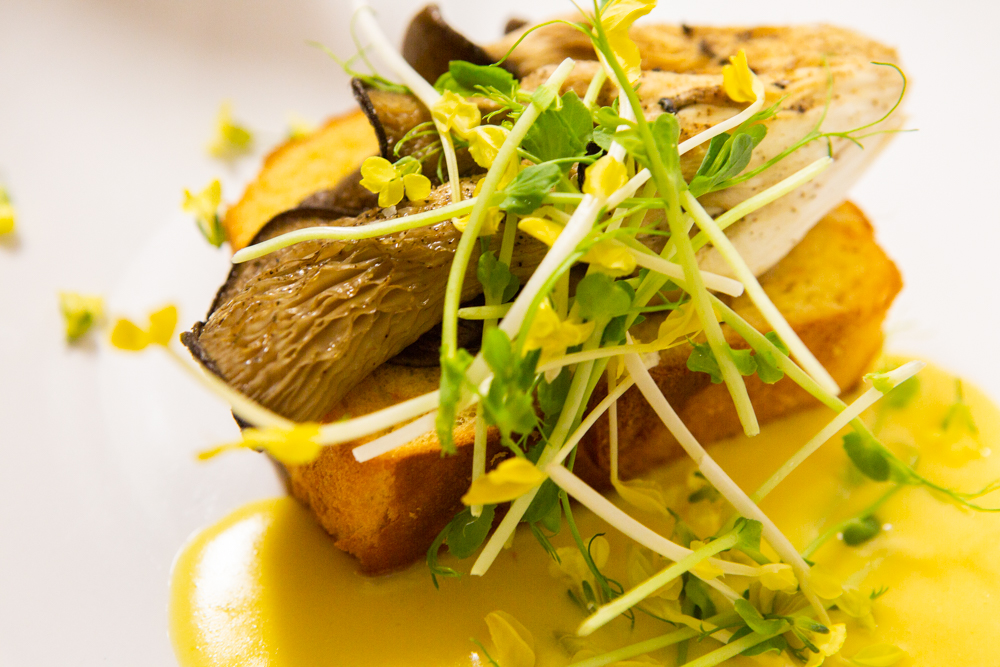
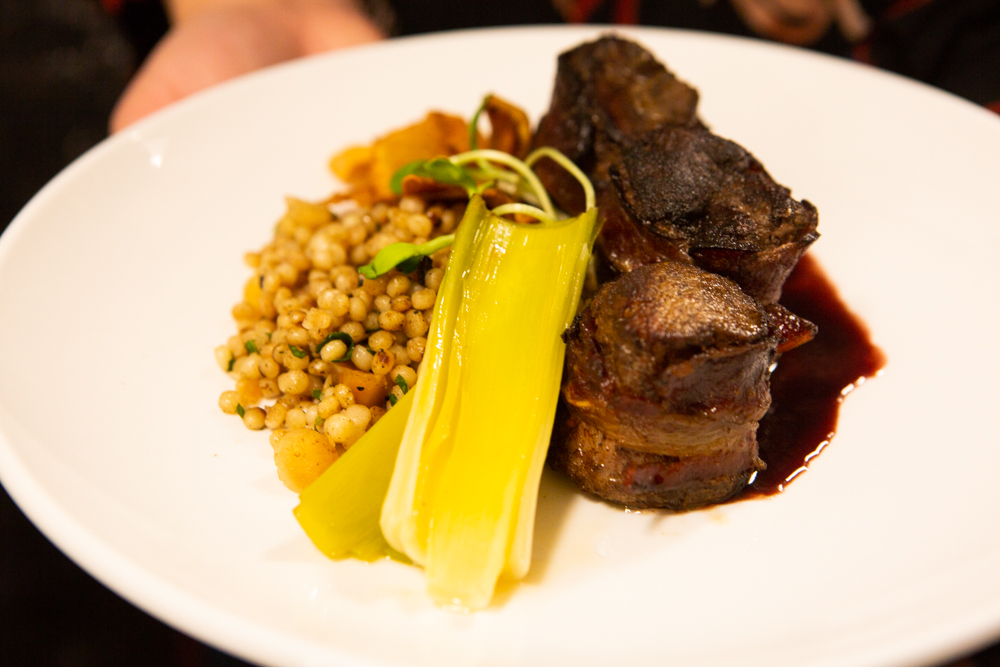
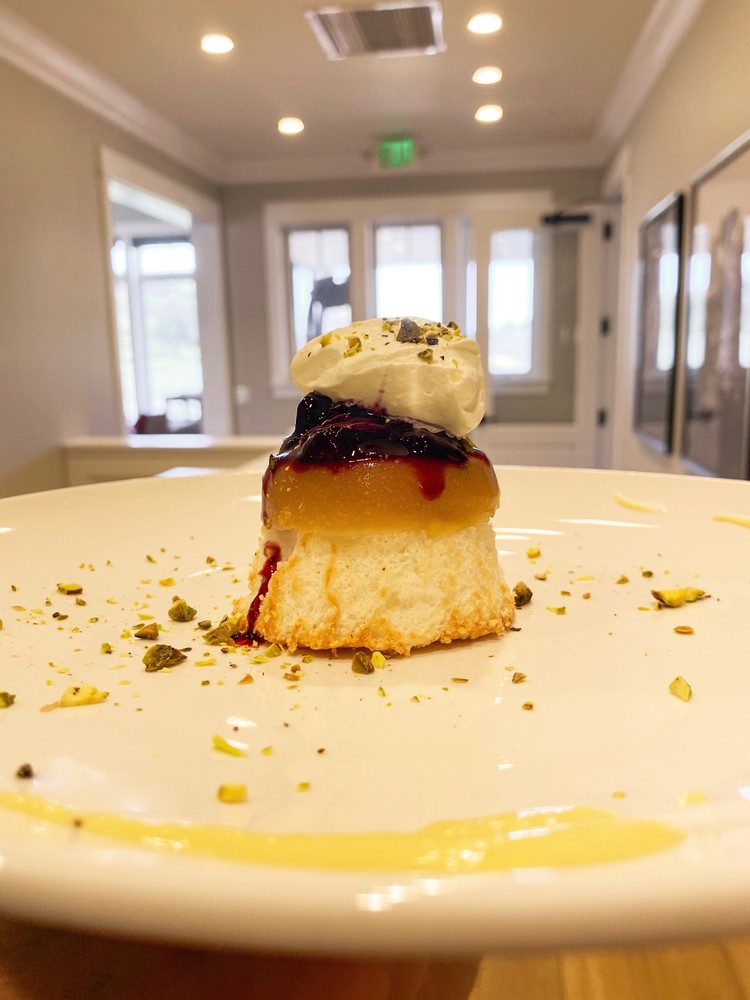
We look forward to hosting more events in the future for our club members! If you are looking for a library event, up next in April is a Petite Sirah Vertical. And mark your calendars for our 2021 Rosé release with a Mother's Day Brunch!

Winter in the Vineyard
Bare vines and dark soil spotted with green grass speckle the hillsides as puffy clouds pass overhead in the vineyard. The quiet landscape of the season, while simple, is beautiful. Despite the tranquility, there is still work to be done and activity begins weeks before the end of Winter.
The first task is composting. Tractors spread it between the rows of the bare vines, which awakes the vineyard to the season ahead. It takes 2 years for the compost to be used by the soil. That's correct, two years. I thought it would have been immediate, but microorganisms in the soil have to break it down. Once it breaks down it gives the soil carbon, nitrogen, and minerals that feed the vine's root system. We have to do this as the vine loses these elements every harvest. We use organic compost instead of chemical compost as it is sustainable. Organic compost also doesn't encourage overgrowth in the vineyard. As my dad shared, chemical compost can act like steroids for a vineyard. We want growth, but not that kind of growth.
The next task is pruning. The vineyard gets a haircut with the old wood being pruned. The pruner keeps two canes (old shoots) on the vine for this year's growth. It is a job that requires time and diligence. We prune later in the Winter to protect the vine from disease. Timing is everything in farming.
Once trimmed, the vine awaits bud break. It is my favorite time of year as the bare vines show life again (even though I know the vines are alive during the Winter...haha). Till then, bring a blanket or coat, and enjoy the tranquility at the tasting room.
Cheers!
-Cecily
Cody Alt Promoted to Winemaker at Parrish Family Vineyard!
 "Growing up I never knew what I wanted to do, coming from San Diego, I didn’t have any agriculture background,” Alt said. “I got into Cal Poly, and of course you have to declare your major, so I was willing to roll the dice and figured wine would be a fun avenue to explore. Wasn’t sure if I wanted to make it, grow it, or sell it, but I chose the winemaking side and fell in love".
"Growing up I never knew what I wanted to do, coming from San Diego, I didn’t have any agriculture background,” Alt said. “I got into Cal Poly, and of course you have to declare your major, so I was willing to roll the dice and figured wine would be a fun avenue to explore. Wasn’t sure if I wanted to make it, grow it, or sell it, but I chose the winemaking side and fell in love".
“What I wanted to do in college is intern in as many places as possible, be it a lab, vineyard, winemaking facility,” Alt recalls. “I wanted to be as well-rounded as possible. My goal was always to be able to run a facility all by myself, to be able to do everything. One of my favorite opportunities was interning in Germany with a biodynamic vineyard and a winemaker who won winemaker of the year a couple of years ago.
Among the many wines Alt has had the pleasure of producing during his career, one of his most exciting releases thus far was the 2017 Four Chords Bordeaux Blend from Parrish Family Vineyards. This complex and intense blend of Cabernet Sauvignon, Malbec, Cabernet Franc and Petit Verdot garnered a 95-point rating from Wine Enthusiast and is a club member favorite!
“I saw an opening in our program at Parrish, we had the Estate Cab, our Reserve Cab and the Silken, but I knew the other varietals we grew and were making wines with would complement each other in a blend,” Alt says. “In the Four Chords, we were very purposeful with the development. Petit Verdot gets the mid palette, Malbec will get that fleshiness which evens it out, the Cab is the main structural component that makes it angular. I thought people would be interested in this blend, and it is very different from anything else we make. That wine was also a real test of my blending skills.”
Alt has had the privilege of working with some of the best names in Paso Robles wines, among them David Parrish. “I met David at a Taco Tuesday event years ago and he offered me a position here with Parrish Family Vineyard, and at the time I turned him down since the offer was close to harvest and I was working with another winery,” Alt recalls. “But eventually I came to my senses and found a way to join the team. David is a great mentor, he’s taught me a lot and given me every opportunity to succeed.”
“Hopefully my love and care for these wines show through,” he says. “That’s kind of your goal as a winemaker, that your passion can show through in that glass and make people happy.”
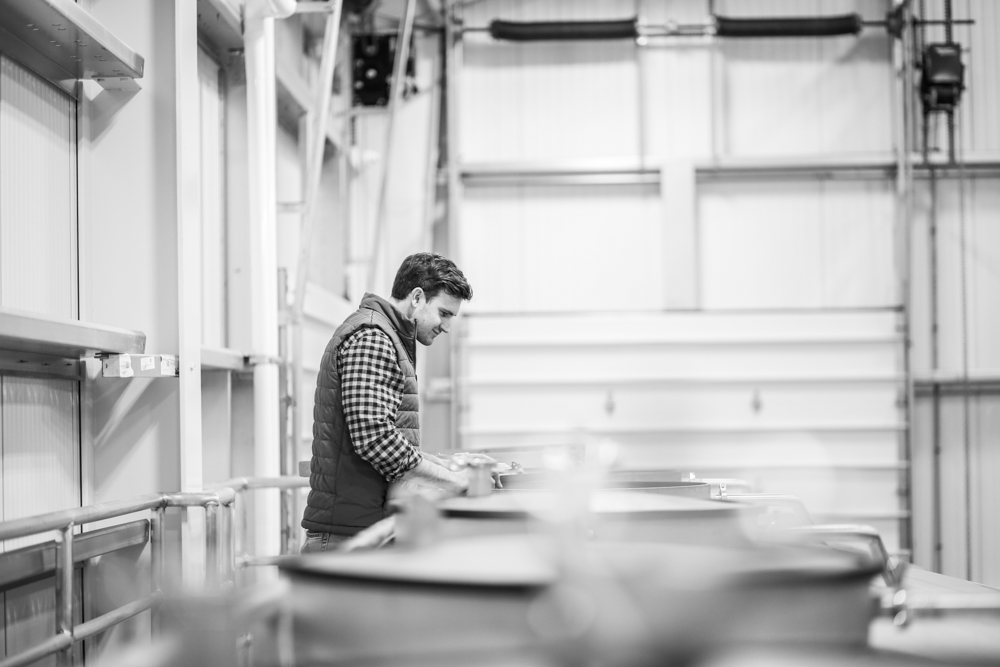
Wine Temperature
"We're having a heatwave, A tropical heatwave. The temperature's rising, It isn't surprising..."
Sung by Marilyn Monroe (There's No Business Like Show Business,1954) echoes in my mind as the Summer months hit. While Summer is bright and happy, I find myself to be like wine and prefer milder temperatures. So, it brings up a question that we frequently get in the tasting room, how do you properly store wine? It's a great question because there are definitely ways to keep wine temperatures perfect.
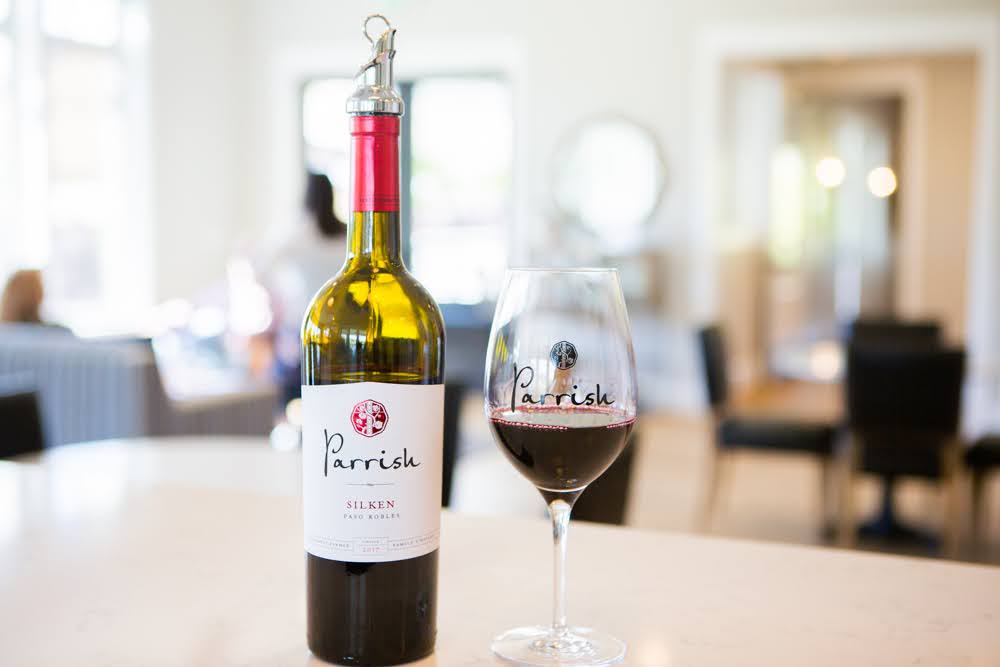
Traveling with Wine
You are meandering the beautiful roads of Paso Robles. Hopefully, you're on Adelaida Road because it's one of my favorites in the area (not biased, right?!). You have the windows down, wind blowing, and you smell the wild grasses of wine country. You're happy even though it's 90 degrees out. Well, there's one thing in the car not so stoked on life and that's the wine you just bought. It's too darn hot for the wine! There are ways to ease the transport for your wine.
- Store your wines in a cooler or a fun wine chilling bag. Check on the temperature frequently. Add ice packs as needed.
- Bring your wines with you. It's okay to bring your wines into the next tasting room. We love our neighbors and would hate for their wine to spoil in the car.
- Plan on stopping at your hotel/B&B/inn during the day to put your bottles in the chilled room.
- Take a tour! Let someone else drive, enjoy your tastings, and let them handle the wine temperature. Our friends at Toast Tours will always carry your wine out for you.
- Have your wine shipped by the tasting room. Keep in mind that shipping is expensive year round, but it is more expensive to ship with temperature control, but it is an option.
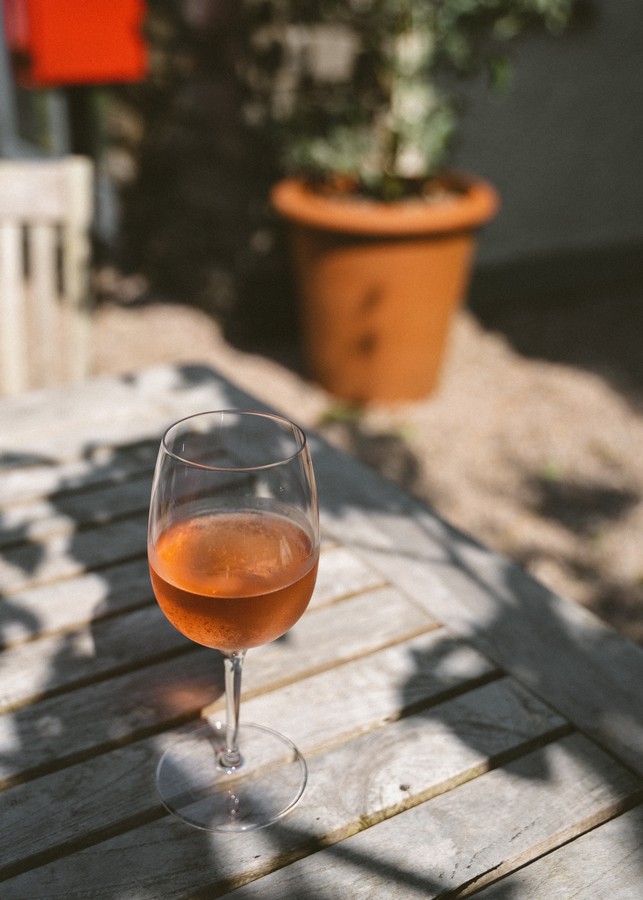
At Home - How to Store Wine
Most of us do not have a dream wine cellar waiting at home. Instead, we have a workhorse Whirlpool fridge that holds our dietary treasures or a cramped master bedroom closet with shoes that need shaping. Do you have to get a wine fridge? The answer is that it depends on you.
What kind of wine drinker are you is the question you should ask before spending money on a wine fridge. So, are you...
- Buy as you go or enjoy soon - Store in your home fridge
- Enjoy good wine and store quite a bit - Get a mid-range wine fridge
- Wine enthusiast - Put some money into a nice wine fridge or cellar (Obviously, a wine enthusiast is not reading this blog because they already know this, but maybe we have some wine enthusiast beginners!)
- Super wine enthusiast with no space - Rent storage at a wine storage facility. These do exist as we ship orders to wine storage facilities.
There are some tips regarding wine storage that can help you further decide how to best store your wine and if a wine fridge is necessary for your wine enjoyment.
- Constant temperature. Wine does not like fluctuating temperatures. Store consistently at about 45-65 ℉.
- There are wine fridges with multiple zones, which are great for keeping whites chilled at 45℉ and reds at 60℉. It's easier for serving wine to have the storing temperature not too far off from what you plan on serving wine at.
- If you are going to store a wine for a long time, have the temperature a little cooler to assist with smooth aging. 50℉ is recommended for a red wine.
- Don't go below 40℉ for wine (unless it's bubbles). Too cold can also be harmful for wine.
- If you cannot afford a wine fridge, and that's okay, do your best! I would pick your home fridge first or a basement cellar. If you can keep your home at a constant temperature, a closet would work as well.
- Somewhere dark. Light actually can tamper with the wine's structure and ultimately hurt the flavor profile.
- Avoid lots of movement and vibrations. It disrupts the aging process by disturbing the sediment.
- Think about the corks as they can dry out. Store your wines horizontially (or upside-down in a case box). If you do have a wine fridge, use humidity. I'd say like 65% is a good precentage.

Opening Wine & Serving
Once you open a wine, oxygen is now in contact and that begins to change the wine as it starts a ticking clock of how long you have till the wine is lack-luster. You may think serving wine is not super important, but it does make a difference in how a wine showcases itself.
- Serving suggestions
- Serve red at like 58-65℉ - warmer for older wines, cooler for younger wines
- White wines at 45-55℉
- Bubbles actually can be served at 38-45℉
- Let red wine breath a little. I'd generally recommend an hour before serving opening the wine and this is especially true for younger wines. It will help the wines express more aroma and flavors. You can use a decanter or an aerator to assist with this also.
- Keep whites chilled as you enjoy. This can be done by keeping the bottle in your home fridge or having a chilling bucket on your table. Also, hold your wine glass by the stem so you do not warm the bowl of the glass.
- Use a Coravin for those wines you want to savor. I'm not a Coravin rep, but honestly it's great for sampling or enjoying just a glass of a special wine.
- Wines that have been opened can last for different times.
- Lighter wines and whites - 1 or 2 days
- Red wines and heavier bodied wines - 3 days
- Ports and high alcohol wines - weeks (maybe months depending on the alcohol)
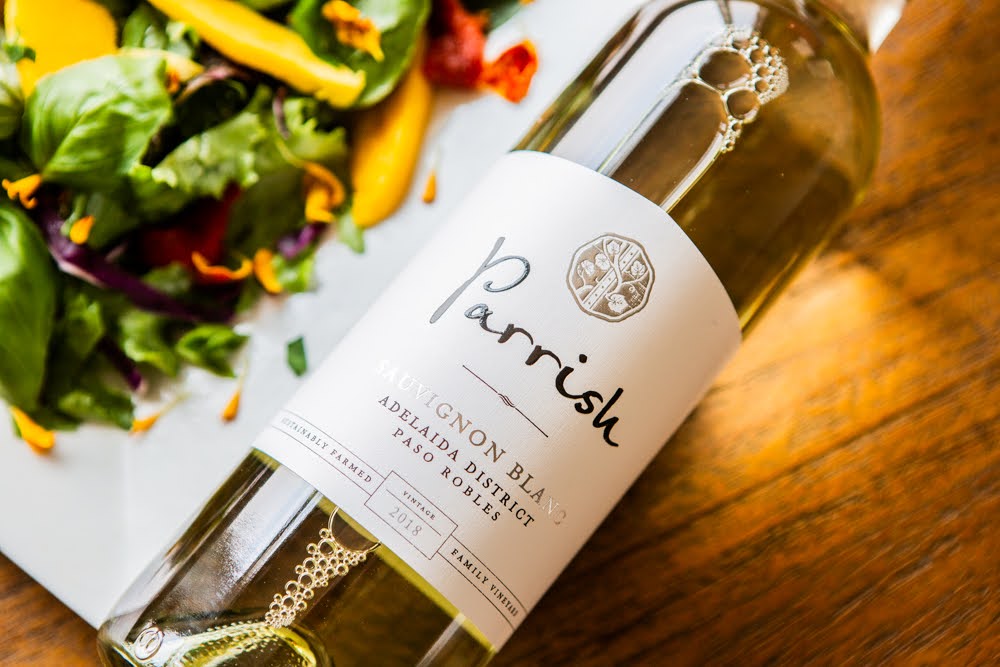
Is your head spinnning yet? No worries. I wrote this not only for you, but for myself as I can't remember all the tidbits sometimes. I typically recommend to guests that ask about wine fridges that they should spend some time researching as it is an imporant investment. I personally know that Liebherr is a good brand. Outside of that, just read lots of reviews to make sure whatever fridge you purchase meets the important tips about wine storage.
Hope this helps and most importantly, stay cool!
-Cecily
Reservations...Why?
We realize that reservations aren't the most spontaneous, but there's a good reason we will be continuing with reservations and accommodating walk-ins when we can. Make Reservations Here
Getting the Dirt on Our Soil
A few weeks ago we had a tractor tilling between the rows of our Adelaida vineyard and while that doesn't sound very exciting, it brought up an interesting conversation about our soil management.
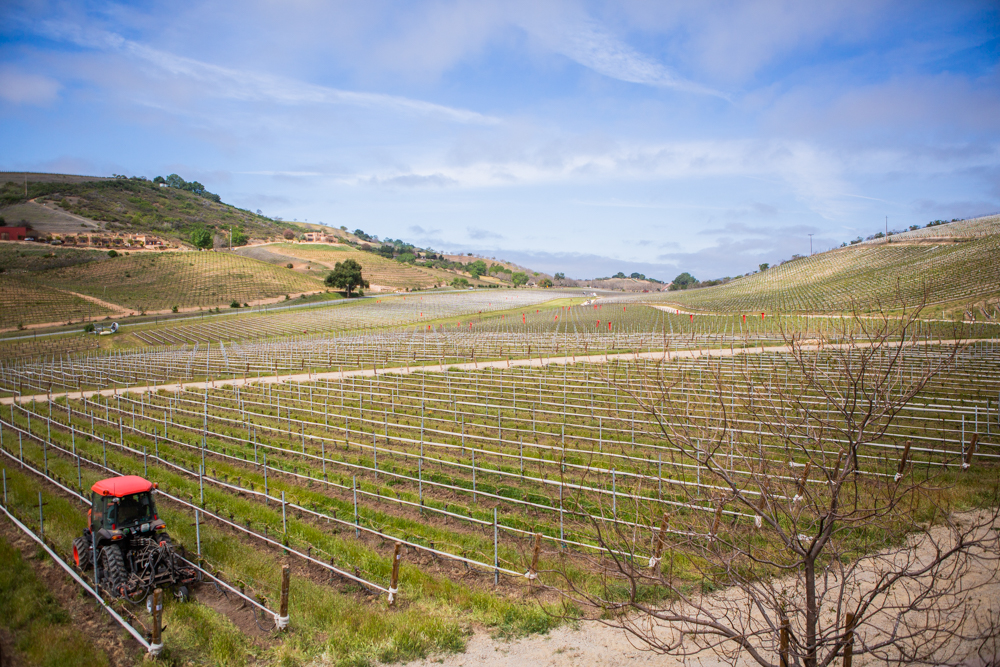
Parrish Adelaida Vineyard
My dad shared with me that we have been a part of a soil project the last couple of years that was implemented by the local RCD (a.k.a. Upper Salinas - Las Tablas Conservation District) and funded by the CDFA (a.k.a. California Department of Food and Agriculture). While my dad might have told me this before, it was like hearing new information and I had to know more. So, he directed me to our vineyard management company, Vineyard Professional Services (VPS), to fill me in. The Chief Operating Officer of VPS, Linnea Smith, reached out to me with a great document (thank you, Linnea!).
VPS has been working with the RCD to study the impact of middle row management and soil health over four years (2021 marks the last year). The reason for this study is that generally vineyard managers till between vineyard rows to reduce weeds and pests as they are competition for the vineyard's water...a precious resource. The problem with this practice is that it is expensive, time-consuming, and impacts erosion control. The updated practices are easy to implement and can be applied by any vineyard in California.
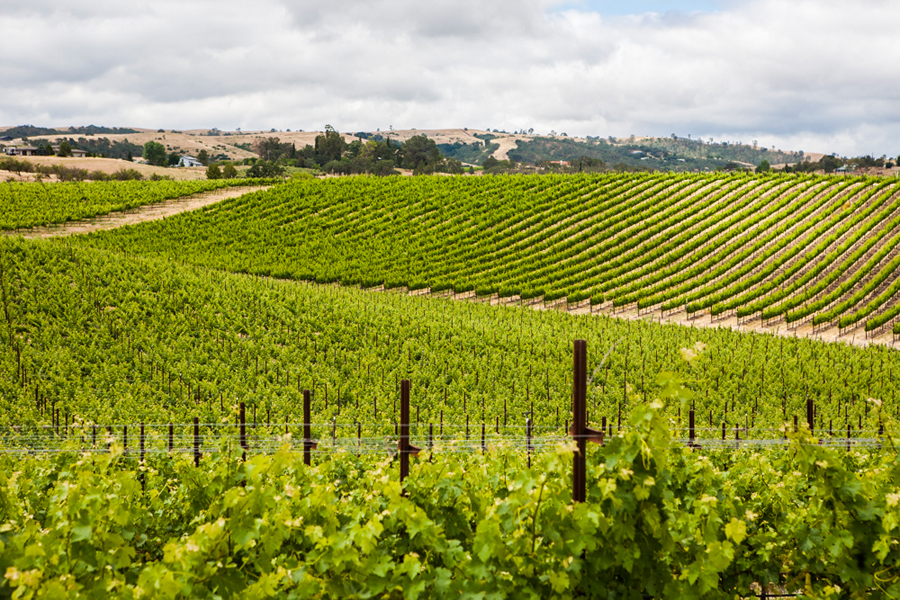 Parrish Templeton Vineyard
Parrish Templeton Vineyard
In 2018, Parrish Family Vineyard's Templeton and Adelaida vineyards were brought into the trial along with three other local vineyards with diverse terroir; soil, and microclimates. In the trial, they tried different cover crops; brome grasses and barley. Then they tried a mix of mowing versus discing. The RCD took soil samples each year and observed the changes in the soil. They took note of the amount of organic matter, nutrient levels, and soil biology and diversity. The hope for the project is that it will lead to an increase of organic matter, improve water retention, and long-term storage of carbon in the soil.
In simple terms, the changed soil practices will mean less water, improved water quality, and fewer pests...overall making the vines productive. That's a win, win, win! This project shows how important soil is in the vineyard. Soil needs to have nutrients and water retention to feed the roots of the vines...otherwise, you will see problems with the season's development.
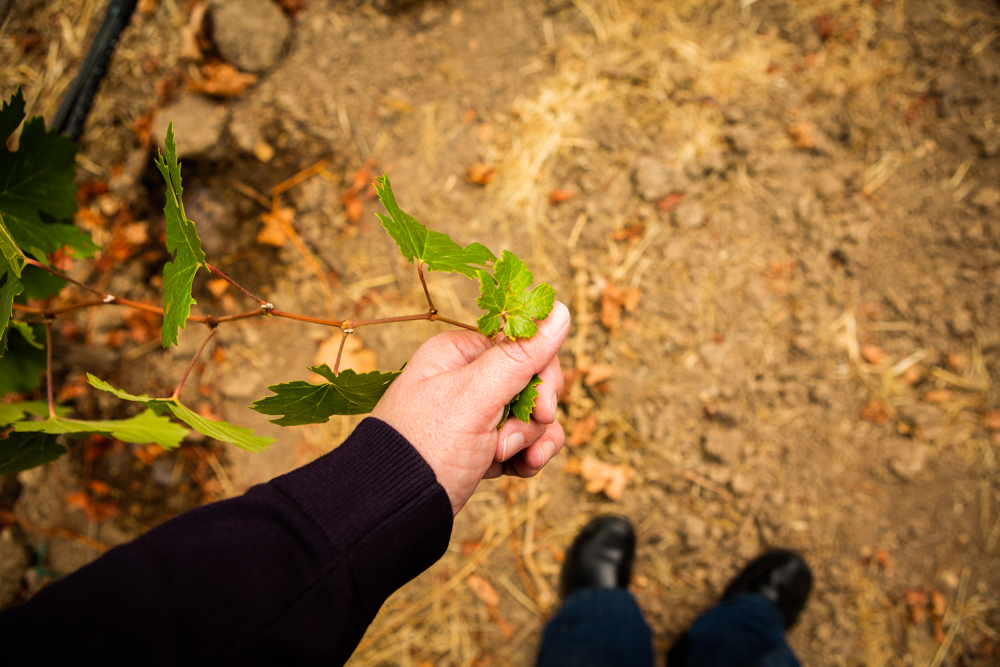
Thanks to the RCD and VPS for including Parrish Family Vineyard in these important trials. It is another example of the Ag Industry innovating and improving to meet the challenges around them. The farmer has always had to adapt and always will, due to climate, disease, pests, and economics.
We'll see how 2021 concludes for this project, so for now, we will wait with a glass of wine and appreciate the efforts as the wine starts in the vineyard.
Cheers!
Cecily Parrish Ray

Late Harvest Sauvignon Blanc - Start to Finish
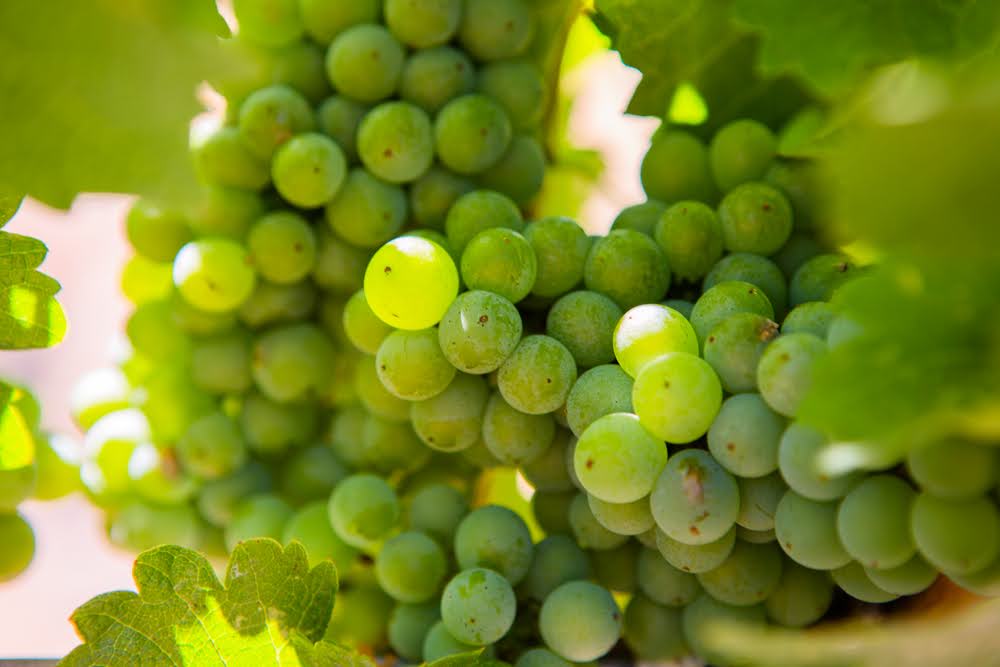
We have been growing our Sauvignon Blanc at the Adelaida vineyard since 2013, while we had been using the fruit to produce our Estate Sauvignon Blanc since 2016, the winemaking team was compelled to try something new. They wanted to do a sauterne-style wine as it would be a nice addition to our lineup as we didn't have a sweet wine.
What is a sauterne? Sauternes are from the Bordeaux region of France and they feature not only Sauvignon Blanc, but also Sémillon and Muscadelle. They tend to be heavier in body, sweet, and have notes of stone fruit, tropical fruit, florals, toasted sugar, coconut, and baking spices. It all depends on the fruit and barrel program, as you do age this style in barrels to add the wonderful body and secondary flavors.
Back in 2019 we took the leap and held back some Sauvignon Blanc clusters from the main harvest in September and allowed the grapes to stay on the vine to develop more sugar. In November 2019, we harvested the remaining Sauvignon Blanc and they were raisined with colors of gold and pink-purple. Hence the term, Late Harvest because it was last to be harvested and allowed to develop more sugar, or higher brix (measurement of sugar). We normally pick at 21 brix for the Sauvignon Blanc, but for this wine, we picked at about 35 brix.
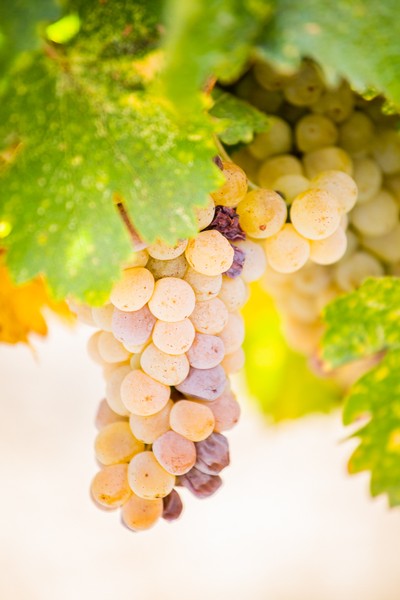
Below is a video we recorded in the middle of the processing the Late Harvest Sauvignon Blanc with Cellar Master Ethan and Assistant Winemaker Cody sharing about this new wine:
*I'm sorry about the background buzz from the winery!
One thing you may notice from the video is the vibrant color. It looks like orange juice! That color fades away during fermentation. After talking with Assistant Winemaker Cody, I learned more about why young wines have a cloudy color that is nowhere near what the finished product will look like. This is known as browning and it's a normal thing that happens during pressing wine. The oxygen dissolves causing the color. It also has some lees and sediment that are stirred up making it not as clear. The CO2 that occurs in fermentation helps lift the oxygen and at that point begins to change the color to be more clarified and golden rather than yellow-orange.
During fermentation, the winemaking team used a weaker yeast so the process would stop at 15-16% alcohol and allow there to be residual sugar in the wine.
What is residual sugar? This is what makes wine sweet. Dry wines have no residual sugar because they have had all the sugar eaten up by yeast during fermentation. Sometimes wine tasters think that sweetness in a dry wine is sugar, but that is most likely the fruit notes of the palate. So, if you like wines that are "sweet" in a dry wine then you would want to look for wines that fruit-forward, less tannic, and have spent time in stainless steel or little time in the barrel.
After processing, the wine then journeyed to oak. The Late Harvest aged in 35% new French oak and 65% neutral oak for about 16 months. This gave the wine more body than our traditional Sauvignon Blanc. Typically, the winemaking team ages Sauvignon Blanc in stainless steel to keep it light and crisp, whereas the Late Harvest is aged to be heavier bodied with more creaminess and caramelization.
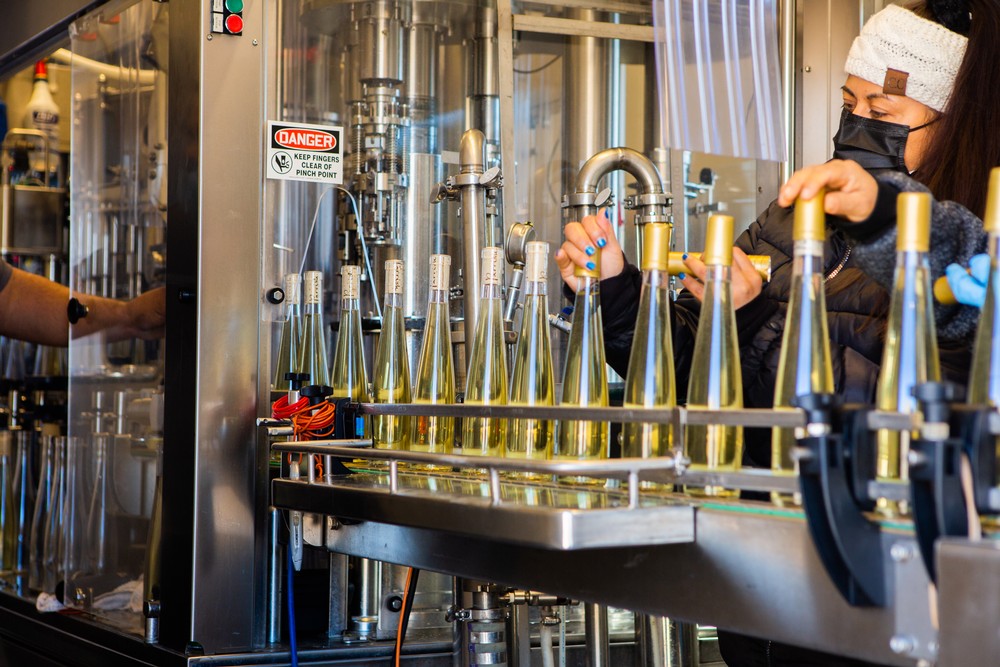
The day we bottled the Late Harvest Sauvignon Blanc, I got to taste it and it was delicious. The notes I got were apricot, lemon and grapefruit jelly candies (think of those Sunkist ones), cream soda, toffee, and then a beautiful brush of acidity. I love the acidity in this wine as it helps balance the body to keep it from becoming cloyingly sweet.
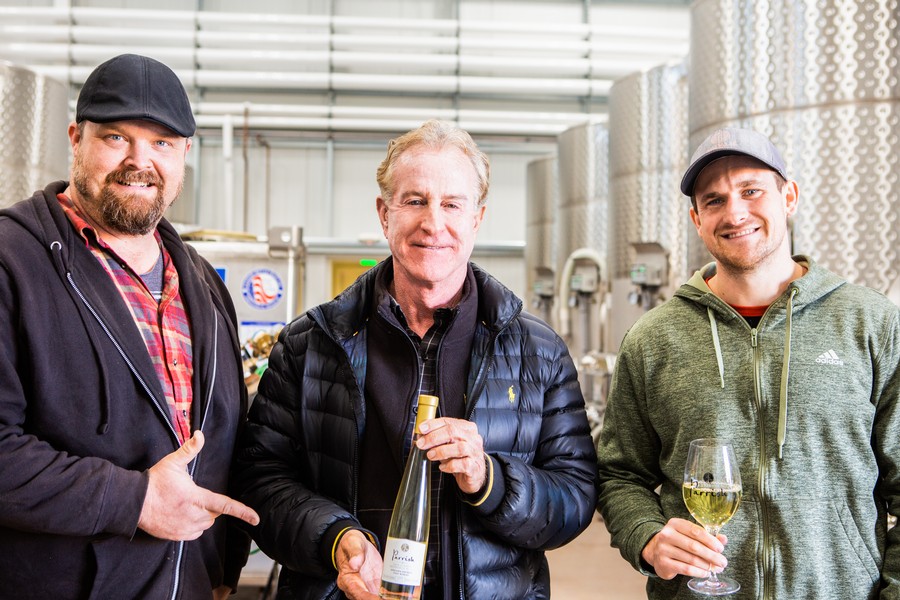
For the winemaking team, it is such a rewarding day to take the wines that have been worked on for a couple of months or years and finish them. They get to see the once grapes transformed to wine and then placed in the bottle. It is also rewarding for the team to do something new and have it turn out to be wonderful. No longer a thought, but a reality.
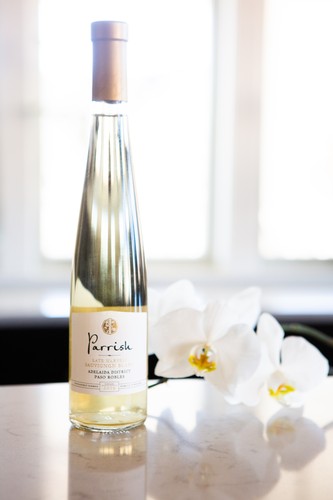
As far as packaging, it is different from our other bottles as the label is with gold accents and the bottle is smaller, 375ml (rather than 750ml). Our whole team voted on the bottle shape for a few days in bottle planning. It was very sophisticated as we lined up 2 options on the counter and then did a tally on post-it notes. It became a bit of a competition, jokingly, as one bottle was being picked by a landslide and the other was lonely with 1 tally mark. But that team member began convincing other team members to bring them to her side. Haha. Alas, the popular bottle was chosen. It was a good attempt! In summation, it was a team effort in picking the packaging.
So, importantly, how should you serve this? Chilled. I would recommend a smaller glass so you can easily access the nose. This will age well. I have yet to try it after being open a couple of days, but feel this would last longer open than a stainless steel, crisp Sauvignon Blanc. Regardless, this wine will age in the bottle for some time.
And then what do you pair it with? You can do dessert with this wine. I would say tarts would be lovely with it like a lemon, coconut, or almond. Cheesecake would be simple and decadent with the Late Harvest. For the release weekend, Estate Chef Samantha paired it with aphrodisiac macarons; fig & pistachio, strawberry balsamic, and raspberry chocolate (awesome!). The fig & pistachio macaron was my favorite with this wine, so taking inspiration to home, try thyme mascarpone figs with roasted pistachio and honey drizzle.
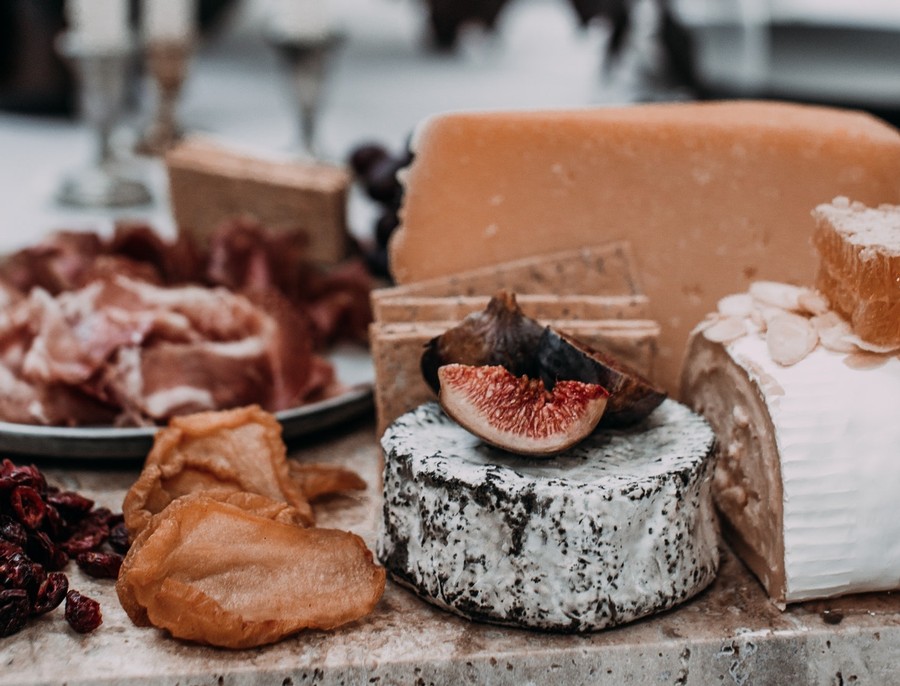
And then let's not forget cheese & charcuterie as this would be beautiful with a board for starters or dessert, I mean why not! Here are some thoughts; baked brie, Fromarer D'affinois Blue Cheese, St. Agur Blue Cheese, Cypress Grove Humboldt Fog, Asiago Rosemary, Idiazabal, Manchego, Honey Bee Goat Cheese, Oakdale Lemon Quark, Foie Gras, Duck Prosciutto, Alle Pia Calabrese Salami, and Smoking Goose Spruce & Candy Salame. Add some fun accouterments like quince paste, bacon jam (Olivas de Oro does one), Marcona almonds, dried nectarines, dried cherries, homemade candied pecans, pumpkin seeds, shortbread biscuits, sourdough, or brioche toast...you'll be set!
I hope you enjoyed learning more about this new wine. Cheers, and if you're a club member, you can pick up this wine here!
-Cecily
Aphrodisiac Macarons
 **Special Event - February 12th-14th**
**Special Event - February 12th-14th**
Yes, you saw that right, Aphrodisiac Macarons! These handcrafted macarons by Chef Samantha are perfect for enjoying the Valentine's holiday as the flavors are decadent and enticing. They pair perfectly with our soon to be released 2018 Late Harvest Sauvignon Blanc, which will be available to Wine Club Members starting that same weekend.
There are 6 macarons per box with 2 each of the following flavors: Fig & Pistachio, Chocolate Raspberry, and Strawberry Balsamic.
We cannot wait for you to try these macarons and you can enjoy either by pick up or togo onsite (we are unable to provide full service at this time). With the boxes being limited, be sure to pre-order your box! You can do so here.
Pick ups and togo onsite is available February 12th-14th, 11am-3:30pm. Cheers!
